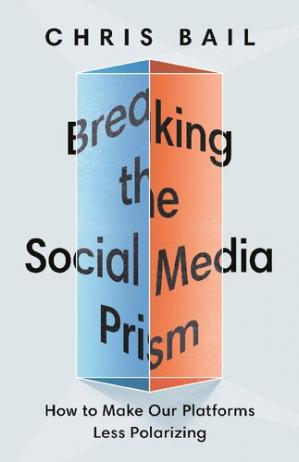 Zusammenfassungen
Zusammenfassungen
 In an era of increasing social isolation, platforms like Facebook and Twitter are among the most important tools we have to understand each other. We use social media as a mirror to decipher our place in society but, as Chris Bail explains, it functions more like a prism that distorts our identities, empowers status-seeking extremists, and renders moderates all but invisible. Breaking the Social Media Prism challenges common myths about echo chambers, foreign misinformation campaigns, and radicalizing algorithms, revealing that the solution to political tribalism lies deep inside ourselves.
In an era of increasing social isolation, platforms like Facebook and Twitter are among the most important tools we have to understand each other. We use social media as a mirror to decipher our place in society but, as Chris Bail explains, it functions more like a prism that distorts our identities, empowers status-seeking extremists, and renders moderates all but invisible. Breaking the Social Media Prism challenges common myths about echo chambers, foreign misinformation campaigns, and radicalizing algorithms, revealing that the solution to political tribalism lies deep inside ourselves.
Drawing on innovative online experiments and in-depth interviews with social media users from across the political spectrum, this book explains why stepping outside of our echo chambers can make us more polarized, not less. Bail takes you inside the minds of online extremists through vivid narratives that trace their lives on the platforms and off—detailing how they dominate public discourse at the expense of the moderate majority. Wherever you stand on the spectrum of user behavior and political opinion, he offers fresh solutions to counter political tribalism from the bottom up and the top down. He introduces new apps and bots to help readers avoid misperceptions and engage in better conversations with the other side. Finally, he explores what the virtual public square might look like if we could hit “reset” and redesign social media from scratch through a first-of-ist-kind experiment on a new social media platform built for scientific research.
Providing data-driven recommendations for strengthening our social media connections, Breaking the Social Media Prism shows how to combat online polarization without deleting our accounts.
 Bemerkungen zu diesem Buch
Bemerkungen zu diesem Buch
Von Beat Döbeli Honegger, erfasst im Biblionetz am 22.09.2021
 Dieses Buch erwähnt ...
Dieses Buch erwähnt ...
 Personen KB IB clear | Nir Eyal , Roger McNamee , Safiya Umoja Noble , Eli Pariser , Duncan J. Watts , Shoshana Zuboff | ||||||||||||||||||||||||||||||||||||||||||||||||||||||||||||||||||||||||
 Begriffe KB IB clear |  Algorithmus Algorithmus algorithm
, algorithm
,  Daten Daten data
, data
,  facebook
, Filterblase
, facebook
, Filterblase
,  Gesellschaft Gesellschaft society
, Informationinformation
, society
, Informationinformation
,  social media / Soziale Medien social media / Soziale Medien social networking software
, social networking software
,  Twitter
, Twitter
,  Wahrnehmung Wahrnehmung perception perception
| ||||||||||||||||||||||||||||||||||||||||||||||||||||||||||||||||||||||||
 Bücher |
|
 Dieses Buch erwähnt vermutlich nicht ...
Dieses Buch erwähnt vermutlich nicht ... 
 Tagcloud
Tagcloud
 Zitationsgraph
Zitationsgraph
 Zitationsgraph (Beta-Test mit vis.js)
Zitationsgraph (Beta-Test mit vis.js)
 1 Erwähnungen
1 Erwähnungen 
- Krieg der Medien - Dark Tech und Populisten übernehmen die Macht (Martin Andree) (2025)


 Volltext dieses Dokuments
Volltext dieses Dokuments
 Bibliographisches
Bibliographisches 
 Beat und dieses Buch
Beat und dieses Buch
Beat hat dieses Buch während seiner Zeit am Institut für Medien und Schule (IMS) ins Biblionetz aufgenommen. Beat besitzt kein physisches, aber ein digitales Exemplar. (das er aber aus Urheberrechtsgründen nicht einfach weitergeben darf). Es gibt bisher nur wenige Objekte im Biblionetz, die dieses Werk zitieren.

















 , 2724 kByte)
, 2724 kByte) 



 Biblionetz-History
Biblionetz-History